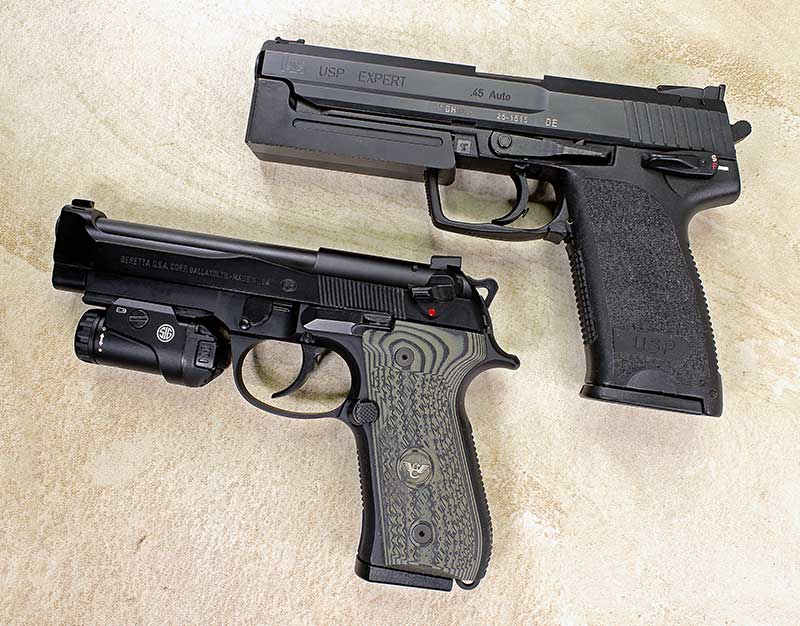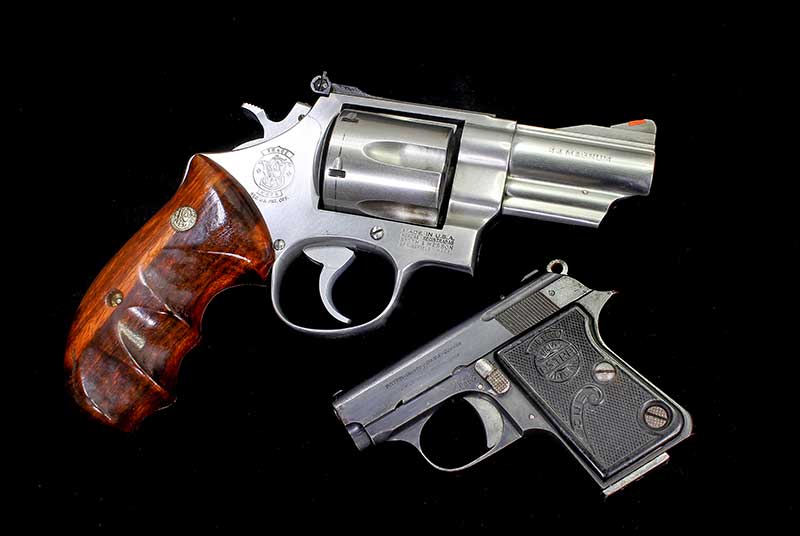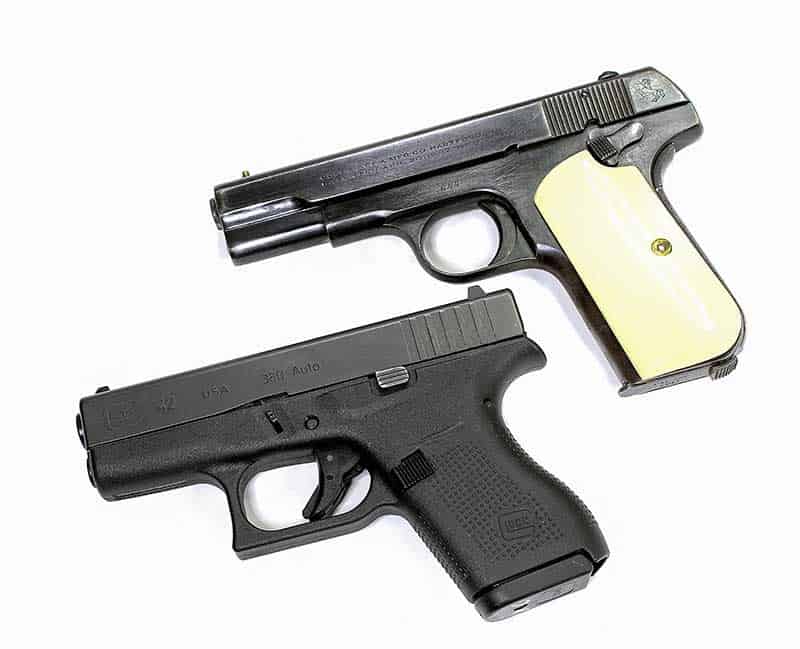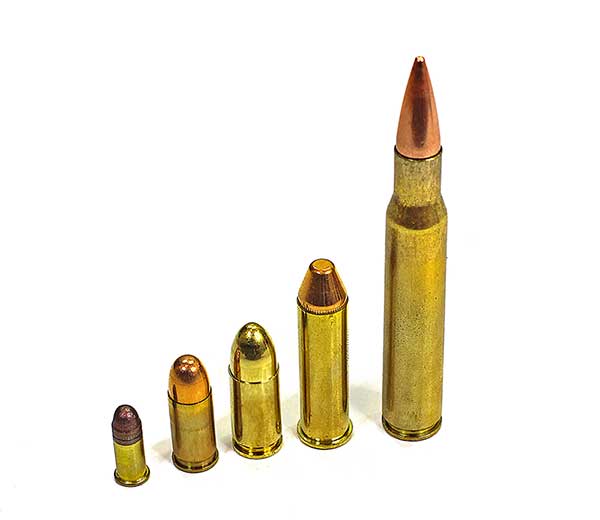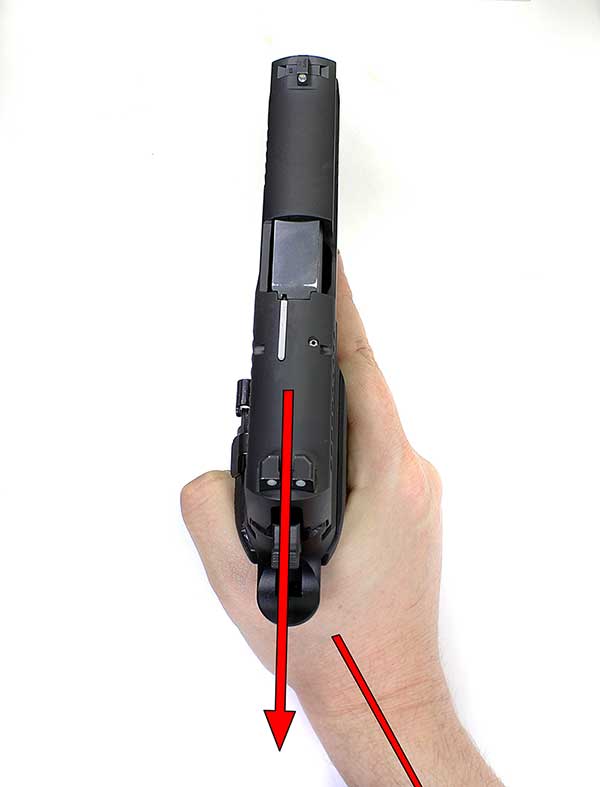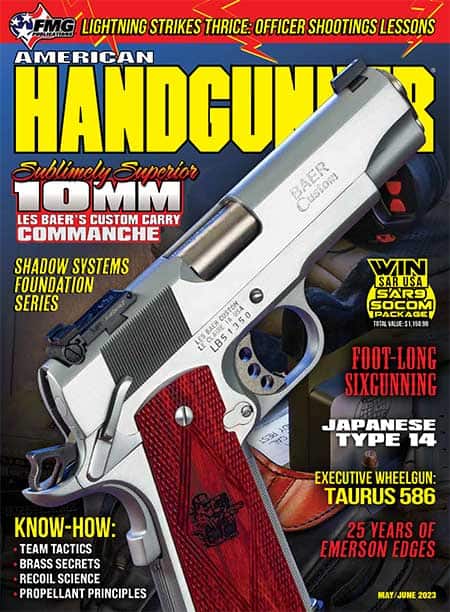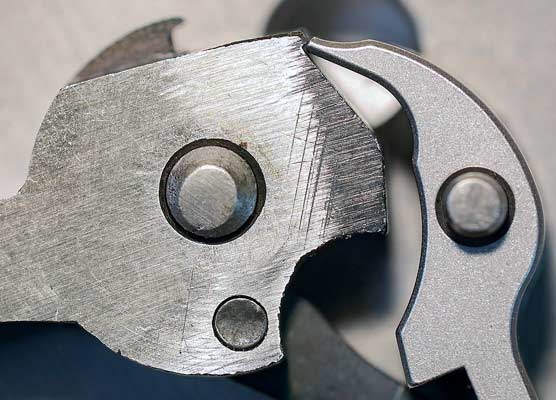When Push Comes to Shove
Understanding Handgun Recoil
There’s a reason why most people shoot a .22 better than a .44 Magnum. Recoil has long been the enemy of realizing the full measure of a gun’s mechanical accuracy. At my range, I’ve seen many very strong and hardy young men talk up hard-kicking handguns like the Desert Eagle and the S&W 500. I’ve also watched many of those strong, hardy young men flinch magnum rounds into the dirt.
To paraphrase George Bernard Shaw, youth is wasted on the young. Now that I’ve shot long enough to shut off my inner reptile brain, my hands are admittedly achier than they once were. (Note: being a writer has not helped this condition.) As such, I certainly find myself in the ranks of those who see the worth of a “soft shooting” handgun.
You might find yourself with a similar value system for reasons of your own. If so, you’ll likely ponder the following: What makes one handgun shoot more stoutly or softly than another? This is an answerable question and one that transcends discussions of caliber alone.
Size And Weight
It’s been a while since many of us took high school physics, but we might dimly remember that force is equal to mass times acceleration. Many of us tend to focus on “force.” We can think of this as the power of the cartridge for which any particular firearm is chambered. However, we should be equally concerned with acceleration, and by that, I mean how rapidly any given gun accelerates into your hand under recoil. Newton’s second law tells us that acceleration and mass are inversely related for any given force.
Put more simply, big guns kick less than small guns of the same caliber. This seems counter-intuitive at first: Witness the number of well-meaning husbands who buy snub-nosed revolvers for their wives. Small guns seem cute, genteel, and easy to handle. That said, show me a lady who shot a scandium J-Frame .38 as her first gun, and I’ll show you a lady who had a horrible first trip to the range — and likely never returned.
If you want to keep recoil to a minimum, extra mass is the ticket. It’s another reason why I tend to prefer barrels of 6″ on revolvers and 5″ on autoloaders: More sight radius is nice, sure, but the extra weight out at the front of the gun adds just a little “special sauce” when it comes to taming recoil.
Ergonomics
A deceptive category, to be sure! Many people buy a revolver or semi-auto because it feels “good in the hand.” That’s better than nothing, but one also wants to make sure it feels good under recoil. The platonic ideal is a gun that fits one’s hand just so, with no gaps or recesses. This will allow the firearm and hand to behave as one unit under recoil, distributing all forces evenly. When this isn’t the case, it can feel like the gun is slamming back into one’s palm.
Sometimes our own biology is at fault when it comes to amplifying the negative effects of recoil. Many big-handed dudes have been cut by the slides of Walther PPKs and bit by the beak-like hammer of a Browning Hi-Power. Even a gun with a modest “kick” can be quite painful under recoil if your hand doesn’t interface with it well.
Personally, I don’t play well with medium- and large-framed guns from a certain manufacturer. Thanks largely due to their rectangular grip frame, they tend to vector recoil right into the knuckle at the base of my thumb — no thanks, I say. Not every pistol will work for every user, as we may perceive the effects of recoil differently from one another.
Grip And Grip Material
Wooden grips on a revolver can be a thing of beauty. However, there’s a reason why Ruger ships its Super Redhawks with big, cushy rubber stocks: Metal and wooden grips have absolutely no “give.” On a heavy kicking gun, hard grips won’t make things worse, but they certainly won’t make things better. Instead, rubber grips once again help to distribute recoil over a larger part of the hand and over a longer duration of time. Those gray-pebbled rubber Hogue grips might not be someone’s first choice of shoes for a vintage S&W, but aesthetics be damned — they work.
Another interesting variable comes in the form of polymer construction. Almost as a rule, polymer frames will be lighter than those made from aluminum or steel. Based on our previous discussion of weight, one would think this would indicate they’d be harder kickers. And yet, I’ve shot some polymer guns that shoot as softly as their metal-framed brethren.
I think the phenomenon comes down once again to “flex” or “give.” Some polymer compounds can act as shock absorbers, as they can be compressed or deformed more easily than metal but will rebound to their original, molded shape. The effect is slight but not negligible!
Additionally, how one grips the gun is important. A strong grip locks the firearm into place and again aids the goal of allowing the gun, wrist, hand and arm to move as one unit. (And, as a combined mass, will therefore accelerate less under the same recoil force.) But supposing one has a weak and/or improper grip, the gun will squirm in hand and distribute recoil forces unequally. Good technique will absolutely reduce the perception of recoil.
Action And Slide Velocity
Remember our previous discussion of a force being exerted over time? Well, it also applies here, and not all guns are created equal. While exceptions exist to the rule, most autoloaders can be classified into “blowback” and “locked breech” designs.
Blowback actions are the simpler of the two. When a round is fired in a gun of this design, only the stiffness of the recoil spring and mass of the slide inhibit its rearward movement until the chamber reaches safe pressures. As the gun cycles, the slide (and only the slide) moves backward, usually at a high velocity, contributing to a “snappy” feel when it rams into the rear of the frame. Usually, this action is reserved for guns chambered in smaller calibers.
Conversely, just about any gun chambered in 9mm or larger is going to have some kind of locking mechanism. If you watch a video of a 1911 or Walther P38 in extreme slow motion, you’ll see the barrel and slide travel together for a bit before the barrel unlocks and the slide continues its rearward movement. Recoil forces act on more things, in more directions and over a longer period of time. Recoil is generally felt more like a shove than a snap.
Guns chambered for .380 ACP — of which there are a lot — can be one of the two action types. My GLOCK 42, a locked breech design, is very comfortable to shoot. My Colt 1908 is far less pleasant, thanks to its blowback action. I’d also be remiss if I didn’t note there are blowback guns in larger calibers.
Additionally, springs are a factor. For example, H&K’s USP series of handguns utilize a dual spring system, where the last bit of slide travel under recoil is further dampened by a second, stiffer recoil spring. As I understand it, H&K moved away from this design in the name of simplification — why use two parts when one will do? I see the logic, but I (and other devotees) simply love how the USP setup feels.
Also, when guns have no springs or slides, there’s little to attenuate the recoil. A single-shot handgun or revolver typically has greater recoil than an autoloader of identical size, weight and caliber.
And Egads … More?
We haven’t even begun to touch on the effect of muzzle brakes, bullet weights and velocities, slow-burning vs. fast-burning powders, torque, weight changes as magazines deplete, aftermarket parts and add-ons and the much-ballyhooed subject of bore-over-frame height. And I’m sure there are even some factors I’m forgetting.
The main takeaway is there are so many different variables and so many guns we’re rarely able to make apples-to-apples comparisons when it comes to recoil. Sure, I can tell you a 4″ gun will kick more than a 6″ gun if it’s the same make, model and caliber. Or an M&P .40 will kick more than an M&P in 9mm. However, if you were to ask me off the top of my head whether a Ruger LCR in .327 Federal kicks more than a .45 ACP-chambered 1911 stoked with +P+ ammo … who knows?
Don’t get me wrong: Keeping track of all of the above variables is certainly helpful when it comes to identifying soft shooters or hard kickers. However, the real world almost always complicates our well-crafted theories. Sometimes you just have to shoot a gun to find out how much you can tolerate the kick, push, shove, or slap it transmits when you pull the trigger.

